Ulceration of the oral mucosa causes discomfort, deprives a person of the opportunity to eat food painlessly. People faced with this problem are interested in how to quickly cure stomatitis in order to return to their usual life. Official and ethnoscience may offer several answers to this question.
It is quite possible to speed up the healing process with stomatitis if treated correctly. But the speed of recovery depends on the degree of neglect of the inflammatory process and the form of stomatitis. At certain types disease is enough 2-3 days intensive care to feel significant relief, while other types of oral ulcers only go away after 7-8 days.
As a rule, to quickly cure stomatitis in the mouth, dentists prescribe medications that can eliminate the underlying cause of the disease.
Viral stomatitis
Herpetic:
- manifested by ulcers on inside cheeks, tongue and palate;
- triggered by smallpox or influenza viruses.
You can get rid of herpes in the mouth on the 4th day of illness if adults are treated:
- anti-inflammatory and antiviral agents (Cholisal, Metrogyl gel);
- analgesics that reduce discomfort (Ketorol);
- immunocorrecting drugs (Imudon, Immunal).
To make the wounds heal faster, use rosehip oil, Carotolin. For children, every 3 hours, the oral mucosa is treated with furacilin, and then oxolinic or interferon ointment is used. When the lesions begin to heal, they are smeared with sea buckthorn oil, aloe or Kalanchoe leaf juice.
Aphthous:
- caused by adenoviruses and staphylococci;
- leads to the formation of yellow and white plaques on the lips and cheeks.
This form of the disease is treated for at least a week. Explaining how to quickly cure such stomatitis in an adult without allowing the development of complications, doctors recommend:
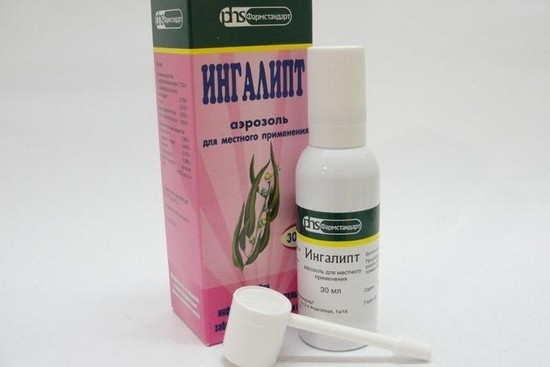
- pain relievers (Anestezin, Lidocaine Asept, Lidochlor);
- preparations for topical use (Ingalipt, Hexoral, Lugol, Cholisal, Actovegin);
- healing sprays with propolis.
Teething gels are prescribed for young patients for pain relief. In addition, babies need:
- antipyretics based on Paracetamol;
- antiseptic solution Miramistin;
- herbal tinctures.
Allergic stomatitis is a part of the human body's reaction to an allergen - for example, dentures, filling material or piercing of lips and tongue. Unpleasant sensations in the mouth disappear one day after the removal of the irritant.
Read also:
If a person is seen white bloom on the tongue, cheeks and gums, it comes about candidal stomatitis. Adults get rid of it with:
- treating the mouth with a warm solution of baking soda;
- rinsing with broths of sage, oak bark, burdock roots;
- antifungal ointments (Levorin, Decamin).
To quickly cure candidal stomatitis (thrush) in a child, you must:
- how to treat the wounds with a cotton swab dipped in warm soda solution;
- lubricate the oral cavity with ointments that contain Nystatin, Levorin, Clotrimazole.
With proper treatment, expect to recover in 5-6 days.
People of any age who want to eliminate mouth ulcers, whatever the cause, will also need:
- B vitamins, including folic and niacin;
- antihistamines.
In addition, one should not forget about adhering to a special diet that excludes salty, sour, hot, cold, spicy and solid foods and about careful oral hygiene.
Medicines that can be found in every home

According to admirers of traditional medicine, stomatitis of any kind can be quickly cured for both adults and children at home, using the simplest remedies.
Antibacterial solution
- Combine hydrogen peroxide and warm boiled water in a 1: 1 ratio.
- Rinse your mouth after every meal.
Cabbage juice
- Chop the head of cabbage using a knife or coarse grater.
- Pass the raw materials through a meat grinder.
- Apply this juice as a dental rinse every 3 hours.
- Remember: the medicine must be freshly prepared.
Garlic ointment
- Chop a small head of garlic until you get a gruel.
- Add 1 tbsp to the garlic mass. l. sour milk.
- Mix the ingredients well.
- Treat mouth ulcers 3-4 times a day.
Potato compress
- Rub the peeled potatoes on a fine grater.
- Connect the resulting mass with olive oil in equal parts.
- Apply the mixture to sterile gauze and apply to the wounds as often as possible.
It is worth noting that these versatile folk remedies will help bring a happy day of recovery closer when combined with traditional medication.
This lesion of the mucous membrane oral cavity Is one of the most common dental diseases. Stomatitis is treated in both children and adults. Before you independently use medication or folk remedies, you need to consult a doctor so that he can make the correct diagnosis, and also eliminate probable causes diseases.
Causes of mucosal inflammation

With stomatitis, the mucous membrane of the mouth turns red, swells, from the inside on the cheeks, palate, tongue appear round whitish formations with a bright red rim. Complaints are associated with general malaise, swollen lymph nodes, significant salivation, fever, sometimes up to 40C. Eating is accompanied by pain, which causes loss of appetite.
Treatment of stomatitis in children is often associated with the period of teething. Often, the disease manifests itself as a consequence of the transferred infectious diseases - measles, scarlet fever, herpes, tonsillitis, flu, develops with vitamin deficiency.
Children often suffer from the herpes variety, which irritates the skin around the lips. With a fungal infection, the oral mucosa is covered with a white coating, like curdled milk, under which there are ulcers. The child often asks for a drink, his saliva foams. Long-term treatment with medications, especially antibiotics, can become the cause of this type of disease.
Adults have to treat stomatitis due to insufficient oral hygiene, regular microtrauma of the mucous membrane from the use of acidic or alkaline foods, excessively hot food or drinks, due to smoking.
Conditionally pathogenic microorganisms that live on the surface of the mucous membrane, with a weakening of immunity or general depletion of the body, can also cause disease. Often stomatitis signals damage to the mucous membrane of the gastrointestinal tract.
Common factors that cause the need for treatment of stomatitis include endocrine diseases, disorders of the cardiovascular, nervous or digestive systems, metabolic disorders. Special varieties occur when syphilis, tuberculosis, other diseases.
In the absence of treatment, stomatitis becomes chronic, which is much more difficult to cope with.
Types of stomatitis
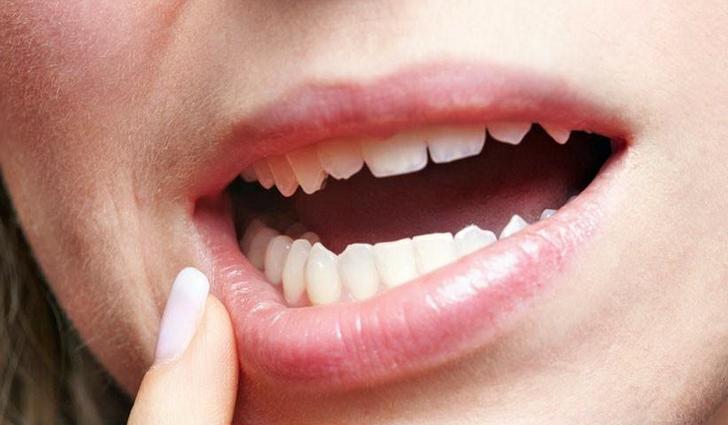
Aphthous. The so-called aphthae- round vesicles, from which ulcers subsequently form. They are covered with a yellowish film with a red border. Mucous membrane swollen, profuse salivation.
This form can be a consequence of diseases of the digestive system, often manifests itself in spring and autumn. Each relapse increases the number of aftas, which is why they can stop healing and turn into ulcers.
When treating stomatitis of this type, it is important to include in the diet more foods rich in B vitamins.
Herpetic. The acute form is caused by a virus herpes... The disease occurs in children and adults. On the swollen mucous membrane of the mouth, rashes appear, similar to aphthae. Feeling unwell, the lymph nodes are enlarged, the temperature is 37.5C.
At the edges of the gums, bubbles form, filled with a clear liquid. They quickly open, which is why erosion appears with a bloom. Eating is accompanied by a burning sensation, pain. In the absence of treatment, stomatitis of this type can turn into ulcerative.
Catarrhal. The mucous membrane is not affected by ulcers or aphthae. As a rule, the disease has to be treated due to a long-term violation of the rules of oral hygiene, the presence of carious cavities. The gums are swollen, bleeding, covered with a whitish coating. At home, rinsing with hydrogen peroxide, chamomile or calendula infusion helps.
Ulcerative. The mucous membrane is affected to the full depth, from the mouth bad smell hurts to chew. Over time, ulcers become covered with a gray coating, lymph nodes enlarge, and the temperature rises. Often, this variety accompanies chronic diseases of the gastrointestinal tract.
For the treatment of stomatitis, rinses with hydrogen peroxide, furacilin, and potassium permanganate are used.
Ulcerative necrotic... This form of the disease affects the mucous membrane up to the internal organs. The state of health worsens, the temperature rises, salivation increases, the gums hurt, the lymph nodes become inflamed. The necrotic lesions are covered with a gray bloom.
Traumatic. It occurs as a result of a mechanical violation of the integrity of the mucous membrane due to careless prosthetics, in case of injury. The affected area becomes inflamed, swollen, blood vessels overflowing with blood. After a while, erosion appears, then a non-healing sore. In severe cases, the disease is complicated by a fungal infection.
Gonococcal. The infection is transmitted from mother to child during childbirth, through household use, as well as from patients. The vessels of the mucous membrane are overflowing with blood, edematous, with small erosions, covered with mucopurulent secretions. In advanced cases, ulcers form on the inside of the cheeks, gums and tongue irregular shape... They almost do not cause painful sensations. In gray-yellow departments, there are gonococci.
Candidal. It develops as a result of improper use of antibiotics, especially when the immune system is weakened. The mucous membrane is affected by whitish films, under which it burns slightly.
Cleansing the body prevents and treats stomatitis

A modern inhabitant consumes a lot of all kinds of emulsifiers, stabilizers, flavor enhancers, food colors, preservatives, treats disease with antibacterial drugs. Although, as you know, true reason many diseases - clogging of internal organs with poisons, decay products, which is why stones are formed in the kidneys, gall bladder, salts are deposited.
Than to treat diseases, including stomatitis, with various ointments and medicines, it is much more effective to take timely preventive measures to cleanse the body.
The degree of contamination of the internal organs of the body is manifested as follows:
- Fatigue and irritability increase. If the food is not completely healthy, includes all kinds of fashionable diets, headache, discomfort in the stomach and liver appears.
- The skin takes on an unhealthy appearance, changes color, acne, moles, wrinkles are more often formed on it. Immunity becomes weak, which causes colds.
- As with allergies, the eyes begin to water for no reason, nasal discharge, mucus in the throat form, and chronic diseases appear.
- Metabolism is disrupted, which causes weight gain, benign tumors, cysts, polyps, etc. appear.
- Diseases of bones, joints appear, there is a need for treatment stomatitis, periodontitis etc.
- The function of the nervous system is impaired.
- The cells of organs and tissues change, which is fraught with neoplasms.
The body gets rid of poisons through the intestines, liver, kidneys, lymphatic system, skin. But if these organs are constantly overloaded, over time they become clogged and cease to cope with their function. A variety of deposits begin to accumulate in the body, slowing down or stopping the necessary life processes.
Therefore, in order not to have to treat stomatitis or other diseases, it is worth taking time and cleaning internal organs from accumulated poisons. It is important that cleansing the body can be carried out at home with folk remedies without significant material costs.
Everyone can easily find in the popular literature specific methods of cleansing various organs and systems. An approximate order of recreational activities is given below:
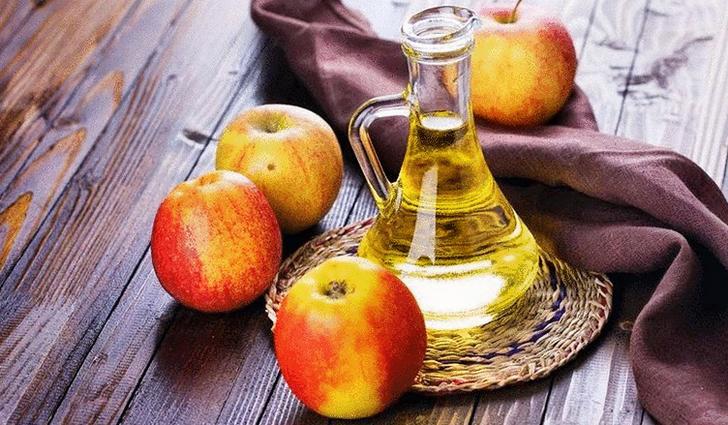
The doctor makes a diagnosis based on complaints, clinical picture diseases, laboratory research... As with any inflammatory process, blood parameters change, as well as the pH of saliva. Saliva is acidic at first, and becomes alkaline as it recovers. If necessary, a bacteriological and allergological examination is carried out.
Treatment of stomatitis at home should be performed as prescribed by a doctor, who will take into account the causes of the disease, the general condition of the body. After eliminating the cause, he will prescribe rinses, ointments, gels, multivitamins.
Blue iodine. Dilute blue iodine in a 1: 1 ratio with warm water. Rinse your mouth with a glass of water 3 times a day. Apply gauze bandages moistened with blue iodine on the affected areas for 5 minutes. Treat stomatitis in this way 3 times a day.
Hydrogen peroxide... Rinse the mouth with 3% hydrogen peroxide diluted with the same amount of water 2-3 times a day for one to two weeks.
Apple vinegar . Rinse your mouth with a mild solution.
Propolis tincture... After eating, rinse your mouth with hot water, then with hydrogen peroxide to thoroughly rinse the ulcers. Some dry them additionally warm air using a hair dryer. Then lubricate the affected areas with diluted water with alcohol tincture of propolis and dry again with warm air so that a film forms as soon as possible.
Chamomile infusion. For the treatment of stomatitis in a child, prepare an infusion of chamomile flowers, add a little boric acid. Rinse your mouth several times a day.
Myrrh oil. According to legend, the ancient Greek warriors did not go on a campaign without a paste of myrrh resin. The thick oil prevents the spread of infection, heals various damage skin, helps with coughs and colds, has anti-inflammatory and antiseptic effect in bacterial and viral lesions. Myrrh is used to treat stomatitis, periodontal disease, inflammation and bleeding of the gums:
- Mix 5 drops myrrh oils and 10 drops of oil wheat germ, apply applications to the affected mucous membranes.
- Take 1 drop myrrh oils with 1/2 teaspoon honey or with vegetable oil with bread 1-2 times a day.
Do not treat stomatitis with myrrh oil during pregnancy.
Thyme oil. Helps treat stomatitis, gum inflammation and bleeding. Can be taken orally with vegetable oil in a ratio of 1: 3 or diluted with honey, jam. Drink with juice, kefir, do not take on an empty stomach.
Thyme is contraindicated in pregnancy, hypertension. The oil increases the sensitivity of the skin to ultraviolet light.
Silver water. Used to treat stomatitis in children and adults. Rinse your mouth with warm water several times a day. To prepare silver water into water room temperature a silver thing is placed for a day.
How to treat stomatitis at home
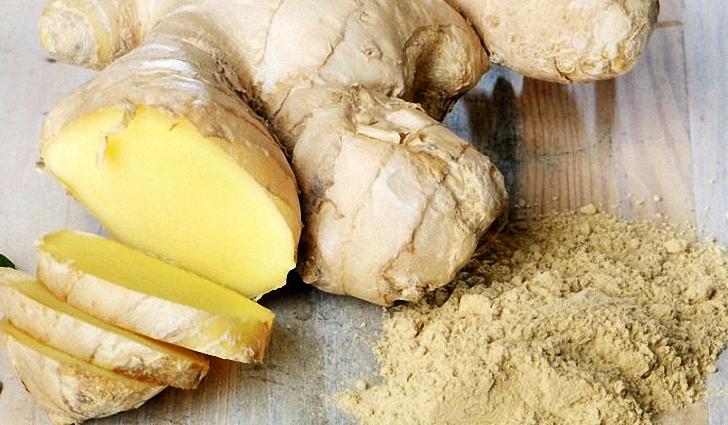
Egg white . Beat the protein in a mixer, add 1/3 cup warm water. Keep the composition in small portions in the mouth for 3 minutes several times a day. Helps to cure stomatitis, inflammation of the oral cavity.
Ginger root . Brew 2c l in a glass of boiling water. ginger powder. Use for mouthwash for adults and children for the treatment of stomatitis, elimination bad smell strengthening the gums. For children, the amount of ginger can be reduced.
Honey. Brew 1c l. green tea with a glass of boiling water in teapot, leave for 45 minutes, drain. Melt 1c l in a water bath. honey, add to the infusion of green tea. Rinse the mouth with warm infusion several times a day to treat stomatitis.
Lemon. Grind lemon peel, 1c. L. boil a spoon with a glass of boiling water in glassware, strain after 2 hours. Rinse your mouth with the composition several times a day to prevent stomatitis and strengthen the gums.
Tea mushroom . For the treatment of ulcerative stomatitis, rinse your mouth several times a day. In some cases, cure occurs within 3-5 days.
Blueberry . Brew 0.5 liters of boiling water 3-4c. L. blueberries, cook for 15 minutes over low heat with the lid closed, let cool. Rinse your mouth with broth for stomatitis, irritation of the mucous membrane.
Another way. Get fresh juice from a glass of blueberries, dilute with water in a 1: 1 ratio. Rinse your mouth several times a day.
Treatment of stomatitis with onions, garlic, horseradish
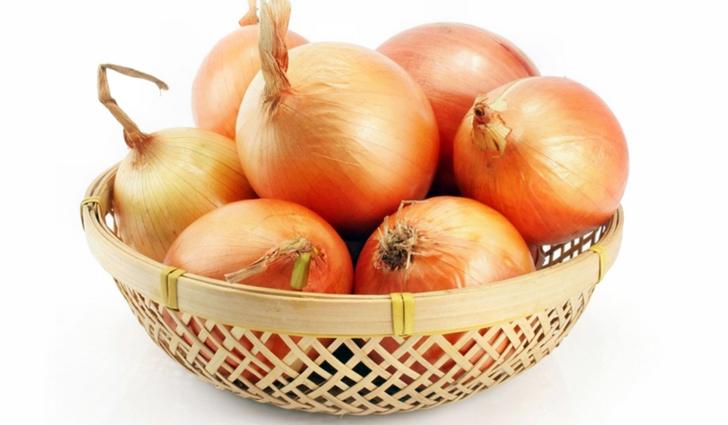
- Brew in a thermos in the evening 1 tsp. seed Luke 1.5 cups boiling water, infuse overnight. In the morning, strain through a cotton cloth. Treat stomatitis with rinsing several times a day.
- Get 1 tsp. freshly squeezed juice onions , 1 tsp. juice kalanchoe, add 3c. l to the juice mixture. water. Rinse your mouth several times a day.
- Crush 2 cloves garlic, add 1c. l. yoghurt, mix. Keep the mass in your mouth for 5 minutes 2-3 times a day. Some types of stomatitis are treated with these methods.
- Chop the root horseradish, 1sl. brew 0.5 liters of boiling water, leave for an hour, drain. Use for rinsing in the treatment of stomatitis.
Folk remedies for the treatment of stomatitis
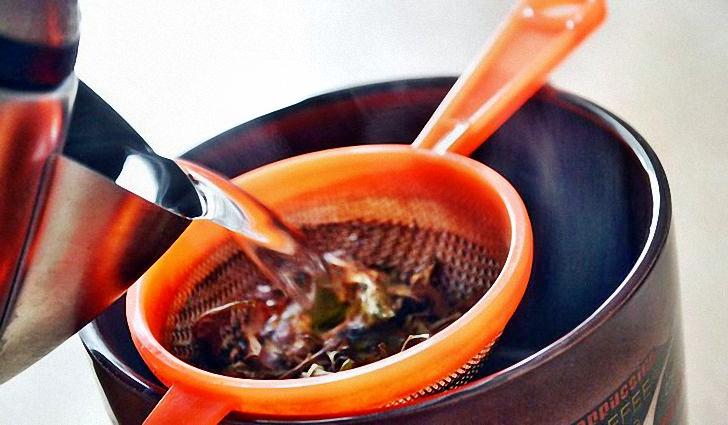
St. John's wort. Brew with a glass of boiling water 1c. L. herbs St. John's wort, 1sl. flowers chamomile, cover and leave for half an hour, strain through a cotton cloth. Use to rinse the mouth.
Calendula. Brew 1c l. claws a glass of boiling water, leave in a container closed with a lid for 1 hour, drain. Gargle to treat stomatitis and thrush in children.
You can use an alcoholic tincture of calendula. Add 1 tsp. tincture in a glass of warm water. Rinse several times a day.
Sage. Brew 1c l. leaves sage, 1sl. flowers calendula 300ml boiling water, simmer in a water bath, covered for 10 minutes. Allow to cool, strain through a cotton cloth.
Gargle to treat stomatitis in children and adults.
Celandine. Wash and chop fresh grass celandine, 2sl. pour 300ml of warm sea buckthorn oil... Insist 48 hours in a cool place, drain. Lubricate the affected mucous membrane with stomatitis.
Chamomile . Brew 0.5 liters of boiling water in a 2c glass container. flowers chamomile and 2sl. linden flowers... Stir, cover and leave for 25 minutes, drain. Rinse your mouth with stomatitis and inflammation of the mucous membrane.
Highlander serpentine(cancerous necks). Infusions from the roots treat stomatitis, inflammation of the oral mucosa and gums.
Nine-force high... Brew 20 g of chopped roots with a glass of boiling water, simmer in a water bath for 5 minutes, leave for 4 hours in a warm place. Take 1 s.l. half an hour before meals.
Mechanical damage or infection of the oral mucosa leads to an inflammatory process, accompanied by redness or white bloom. In this case, it is customary to talk about such a phenomenon as stomatitis.
His characteristic feature is a high sensitivity and painful reaction to touch. The pain is expressed in the form of a burning sensation that does not go away for some time after contact with the irritant. Localization of stomatitis in any one place of the oral cavity is impossible - it occurs exactly where the damage occurred, therefore, in especially severe cases, there is difficulty in swallowing and problems when chewing food.
Causes of stomatitis and risk factors
Stomatitis can occur for an unlimited number of reasons:
- unwashed fruits and vegetables (or any other food without the necessary processing or prepared in violation of sanitary standards);
- lack or insufficient oral hygiene (including dental diseases - pulpitis, caries, tartar, etc.);
- the consequences of injuries (ranging from bite of the cheek and damage to the mucous membrane with a hard brush to fish bones or mechanical damage by foreign objects);
- drinking alcohol (especially low-quality alcohol), smoking and taking medicines for resorption;
- eating spicy and salty foods that can corrode mucous membranes, as well as hard food (chips, crackers, etc.), which carries the risk of mechanical injury;
- stomatitis can be a problem of an existing infectious disease(acts as one of the symptoms).
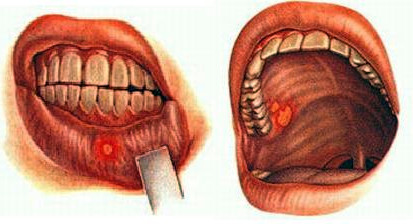
Risk factors can be safely attributed environmental factors, hormonal state and interesting position (in relation to women). According to the latest medical research, it turns out that regular and uncontrolled consumption of sweets can also harm the oral mucosa, although, in fact, it looks more like chain reaction after tooth damage.
Basics of treatment and prevention of stomatitis
The mucous membrane of the oral cavity with colds viral diseases (influenza, ARVI) can become thinner and dry out, which is necessary condition for problems with her. Accordingly, when diagnosing such diseases, the oral cavity must be irrigated periodically (the use of sprays will not solve the problem, more careful therapy is needed).
And here we can safely say that all medicinal medicinal and hygiene products for oral care originate in folk medicine. However, in classic recipes everything is extremely natural and natural.
Hygiene according to folk medical practice is rinsing with the use of antiviral and antiseptic agents, and already developed stomatitis is treated in a complex manner (natural antiseptics, plaque removers and healing drugs are used). As for the prevention of stomatitis, we can say that the populists have gone much further than traditional medicine.
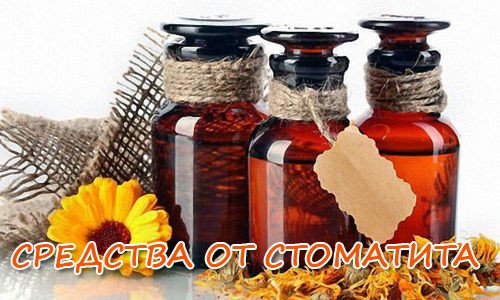
Preventive folk remedies for stomatitis:
- Decoction of oak bark
Dried bark must be ground into powder (grated), then take 1-2 tablespoons per 0.8-1 liter of water, stir and bring to a boil over low heat (do not boil). Let the broth cool, then strain through cheesecloth. The resulting product must be applied warm - rinse your mouth thoroughly and spit it out. One rinse - 150-200 ml 2-4 times a day (best after meals). - Tincture of marigold (calendula)
Here you need an alcoholic tincture, so do not overdo it with the amount - 1-2 teaspoons per half a glass of water (necessarily boiled) is enough. Rinse your mouth 2 times a day - in the morning and in the evening (before brushing your teeth, as if you are driving, the smell can attract attention). - Most simple recipes- This is an aqueous solution of baking soda (half a teaspoon in a glass of water for beginning stomatitis or strong infusion of black tea - after rinsing, you need to wait 5-7 minutes, after which you can brush your teeth).
Traditional medicines for the treatment of stomatitis
The above recipes can be considered universal, since with an increase in consistency by 1.5-2 times, they will fully help cure stomatitis. But, there are situations in which neither oak bark, nor calendula, nor soda will work - pregnancy, AIDS, hormonal problems and the consequences of drug therapy.
Here we must proceed from the fact that the lesions are obtained by natural chemical means, and, consequently, the means must be more powerful and targeted, for example:
- aloe or kolanchoe juice will help perfectly - with just squeezed juice, blot the tissue and apply directly to the site of the lesion. Alternatively: you can apply juice from a pipette or, when the stomatitis area is relatively large, rinse your mouth (for an unlimited time, so whoever can);
- summer offers Alternative option- plantain juice, although it needs to be diluted warm boiled water 1: 1 so as not to burn the edges of the mucosa (all about plantain ...);
- a modern remedy for inflammatory stomatitis is ordinary beer, only you must first open it, release the gas and heat it up to 28-30 degrees, then rinse 0.5 liters at a time 2-3 times a day (caution: during such rinses it is better not to drive, drink alcohol or drink milk).
Generally available beekeeping products
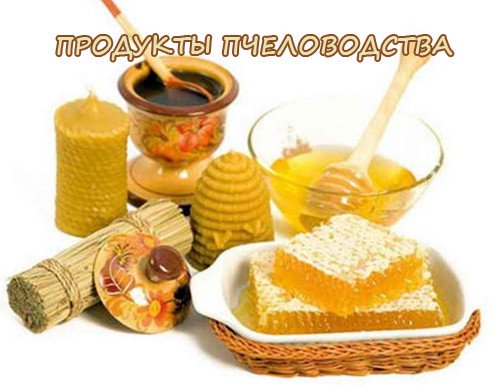
Regardless of the presence of diseases (except for the manifestation allergic reactions) and the severity of the general condition, beekeeping products can be used as cures for stomatitis - beekeeping, propolis, bee bread, honey and pollen. All of them (in different proportions) are intended for chewing, so they do not require specialized training. None of the ingredients are found in their pure form, therefore the essence of these products is the same, but with different mass fractions of individual ones:
- pollen and bee bread have a powerful antimicrobial effect and largely contribute to the restoration of mucous membranes due to the rich vitamin and mineral content;
- propolis itself is an extremely aggressive component, so you need to chew it a little, or replace it with consumption alcohol tincture- it is a very strong anti-inflammatory, warming and antibacterial agent of broad action;
- Zabrus is used by people who cannot take bitter (but more useful) remedies. 30-50% of the zabrus consists of honey, so chewing it can take 10-15 minutes without harm. Zabrus will have a healing and restorative effect, as well as create protective film on the mucous membrane of the mouth.
It is more difficult with honey, since in reality only "heavy" varieties (buckwheat, linden, herbs and willow-herb) and unique phacelia help against stomatitis.
In contrast, we can say that with stomatitis it is inappropriate to eat acacia honey, chestnut honey, fruit varieties and mountain honey.
Conclusion
Modern hygiene products contain many formulas and recipes from traditional medicine, so with regular oral cavity treatment and accompanying procedures (brushing your teeth, using factory or natural rinses), you can be sure of the cleanliness and health of the mucous membrane.
That purity is a guarantee good health, instilled in everyone with childhood... But not all people consider it compulsory to visit the dentist once every six months. And inadequate oral hygiene can be frustrating. One of them is stomatitis. it inflammatory process affecting the mucous membrane in the mouth. The disease causes many unpleasant sensations for both adults and children. And under no circumstances should it be launched. Sometimes the disease can go away on its own, but more often it leads to serious disorders.
That is why, at the first symptoms, it is necessary to immediately begin to fight the disease. How to cure stomatitis in the mouth? To answer this question, you need to understand exactly what type of illness you are facing. After all, each of them needs their own treatment.
and symptoms
In medicine, several manifestations of the disease are known. Each type has its own symptoms and requires specific treatment.
- Catarrhal stomatitis. The most common form of the disease. This stomatitis on the gums has all the main symptoms: pain in redness, high salivation, an unpleasant odor. However, ulcers do not form with it.
- Fungal stomatitis. A manifestation of this form of the disease is a white cheesy bloom. It is caused by fungi of the genus Candida.
- Vesicular enteroviral stomatitis. Viral disease... It is accompanied by the appearance of a blistering rash - vesicles - on the mucous membrane. Often, the disease occurs when high temperature... Sometimes the characteristic rash affects the feet and palms.
- Treatment of this form should not be started. After all, the cause of the disease is a virus. This is the most common herpes. It is characterized by all the symptoms of the disease. The occurrence of an increase in temperature is observed.
- Allergic stomatitis. There are many reasons for development for this form. It can be food, medicine, and dentures. It is characterized by redness, white spots. Small punctate hemorrhages or vesicles are observed.
- Traumatic stomatitis. It is caused by mechanical or chemical damage to the mucous membrane. Hot food, unsuccessful crown installation, and sometimes the habit of gnawing nuts and seeds provoke its occurrence. Inflammation and swelling occur in the oral cavity. Typically, the temperature rises. Papillomas appear. Painful sensations occur during meals.
- Vincent's stomatitis. This is a very unpleasant and severe form of the disease. Its other name is ulcerative stomatitis. The causative agent of the disease is the symbiosis of Vincent's spirochete and fusiform bacillus. They are always present in the human body, but in limited quantities. Failure to comply with the rules of personal hygiene provokes their reproduction. Initially, weakness appears, headaches are possible. Further flow causes joint pain, fever, bleeding gums. If left untreated, ulcerative stomatitis causes severe pain in the mouth. At the same time, the language becomes rather "naughty".

Causes of occurrence
To clarify the question of how to cure stomatitis in the mouth, you need to deal with the source of the problem. Despite the fact that the diagnosis is quite common, the cause of the occurrence has not been definitively determined. It is widely believed that the disease is closely related to lowered immunity.
Stomatitis can be provoked by:
- ignoring the rules of personal oral hygiene;
- toothpastes with lauryl;
- injuries of mechanical or chemical origin;
- emotional stress;
- allergic reactions;
- insufficient balanced nutrition (lack of zinc, selenium, iron, B vitamins);
- gastrointestinal diseases;
- heredity;
- bacteria.
Stomatitis treatment
The occurrence of painful sensations in the mouth or wounds on the mucous membrane is a sufficient reason to seek help from a doctor. It is especially unpleasant when stomatitis occurs in a child (1 year old). Namely, at this age, the disease most often manifests itself in children. It is also called a thrush. And if the kids are immediately taken to a doctor, then adults with a similar disease are absolutely in no hurry for help. And often they simply ignore the problem, although the dentist will quickly determine the form of the disease and take the necessary measures to combat the disease. Even if you decide to get rid of it at home, a specialist consultation will not hurt.
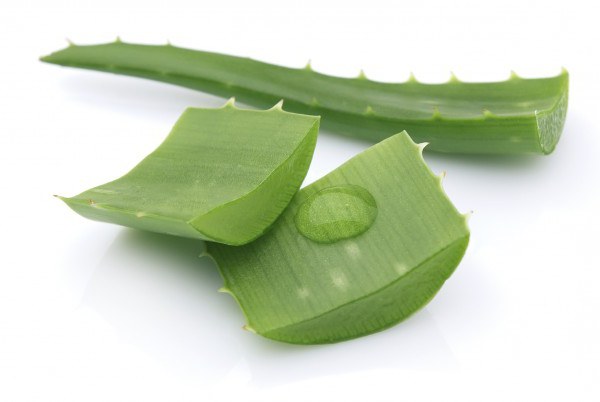
Treatment of stomatitis on the lip
Many people know firsthand about this disease. However, for those who encountered it for the first time, it is worth explaining. This is an infectious lesion of the lip area in the form of beige, whitish spots that resemble droplets of milk. Such manifestations are quite painful, cause a lot of unpleasant sensations. The onset of the disease indicates a reduced immunity.
Stomatitis on the lip is a great home remedy. Majority folk methods not only allow you to get rid of the disease, but also protect the mucous membrane from the further development of microbes.
To the main ways home treatment include:
- Moxibustion with alcohol. Simple enough but very efficient method... Ethyl (76%) alcohol or propolis can be used.
- Oak bark. It is worth worrying about the oral cavity. Make an oak bark tincture. Rinse your mouth with this solution at least three times a day.
- Aloe. The plant sap is thoroughly mixed with honey. This mixture should be used to lubricate stomatitis on the lip (or on the gum). You can simply apply a piece of aloe leaf to the whitish spot.
Remember that timely started treatment allows you to overcome the disease within a week.
Children's stomatitis
Very often, the disease occurs in infants in the first year of life. As a rule, it is a symptom of dysbiosis or a complication of exudative-catarrhal diathesis. After all the immune system the baby has not yet fully matured and is not able to resist microorganisms on its own. Often stomatitis in a child (1 year old) appears after prolonged antibiotic treatment. It should be noted that any mucous membranes of the newborn's body can be affected in this case.
A common medical condition is pain in the mouth. The infant refuses to eat and drink. In some cases, stomatitis is accompanied by intoxication. The child becomes lethargic, the body temperature rises significantly, and lymph nodes may even enlarge.
As a rule, pediatric stomatitis at this age is treated only in a hospital. Constant medical supervision allows you to monitor the baby's condition and take timely action if necessary.
Toddlers on breastfeeding, during the period of the disease are transferred to food from a spoon. This protects the mother from possible mastitis and makes the infant's food intake less painful. The mucous membrane of the child before and after meals must be treated with a disinfecting solution (strictly according to the doctor's prescription). For treatment, pain relievers, antipyretic drugs, vitamins and antibiotics are prescribed. But all funds are prescribed exclusively by a doctor. Any self-medication can have a rather negative effect on the health of a newborn.

Ulcerative stomatitis treatment
The acute stage is characteristic only with a viral infection. If the disease becomes chronic, then it lasts long enough. In this case, the acute stage is replaced by periods of remission. Aggravation in this case is most often caused by mechanical damage.
Treatment includes:
- Treatment of the entire oral cavity and directly ulcers. You can rinse with herbal decoctions or antiseptics.
- If necessary, the doctor prescribes antipyretic, antihistamines.
- For the healing of ulcers, use the drug "Citral", propolis, vitamins C, R.
- If the source of the disease is a viral infection, special therapy is prescribed.
- Particular attention should be paid to nutrition. In order not to irritate the mucous membrane, hot, sour, hard, spicy foods are excluded from the diet.
The ulcers may go away on their own after a few weeks. However, not cured acute form pulls the chronic stage. But getting rid of it is almost impossible. Remember that the doctor will tell you how to cure stomatitis in the mouth without serious consequences.
![]()
Traumatic stomatitis
First, you need to completely get rid of the cause that caused the disease. Most often it is a tooth damaged by caries. Therefore, the best thing to do is to visit your dentist. This is the only way to avoid repeated injury.
Allergic stomatitis
Treatment of a mild form does not require much effort. Most often, antiallergic drugs are prescribed. For more complex ones, corticosteroids are injected intravenously. It is very important to identify the allergen and try to get rid of it as much as possible, whether it is a food product or a denture material.
You should not forget about adherence to diet during treatment.
Vincent's stomatitis
The first step is a thorough sanitation of the oral cavity - stones on the teeth, dead tissue are removed. The course of treatment must include antibiotics, rinsing with antiseptics.
For the best effect, antihistamines, Trichopolum, vitamins are most often prescribed. Enzyme means are used to remove plaque, after which the wounds are lubricated with ointments, for example, "Solcoseryl".
This is a rather severe form of stomatitis, which when improper treatment can lead to tooth loss. Timely appeal for medical care guarantees a favorable prognosis.
Treatment of candidal stomatitis
This is a mild disease. It can be easily treated at home. At the same time, it has a rather unsightly appearance (photos cause discomfort). Treatment consists of a course of antifungal drugs and elixirs. As a rule, after two weeks, the disease completely recedes.
Frequent stomatitis clearly indicates a very weak immunity. In this case, antifungal medications should be drunk constantly for prophylaxis.
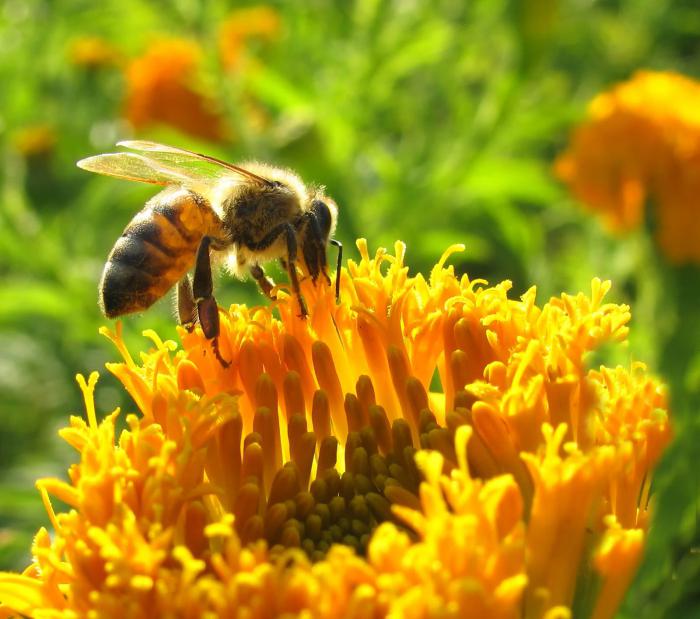
Treatment with folk remedies
The disease is accompanied by very unpleasant manifestations - erosion. Lots of effective advice how to get rid of the disease, gives traditional medicine. Most recipes contain herbs that have anti-inflammatory properties. These are chamomile, calendula, eucalyptus, juniper, yarrow. Help to cure stomatitis at home and oil solutions (rosehip oil, sea buckthorn).
At the first signs of stomatitis, you should:
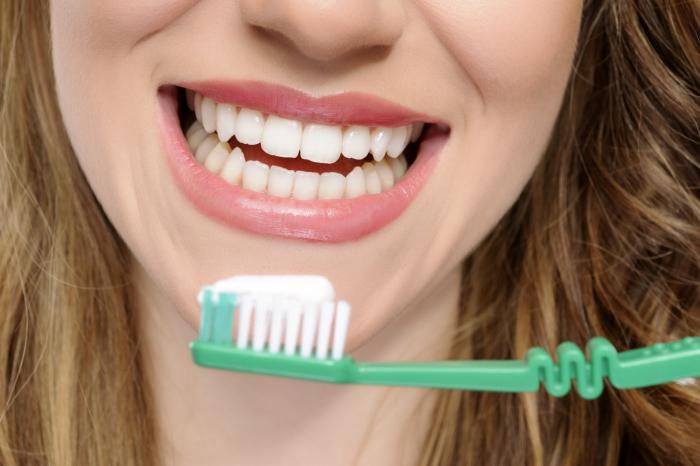
Prevention of stomatitis
First of all, it is necessary to carefully monitor the condition of the teeth. Any problems with them can become not only a source of illness, but also spread the infection throughout the mouth. Brushing your teeth with rinses is a must.
You should be very careful about your health, exclude from the diet those foods that could provoke stomatitis. It is necessary to monitor immunity, try to avoid sources of infection.
Prevention of stomatitis in children should begin with the maximum exclusion from the baby's everyday life of products and objects that carry the infection.
Do not forget about diet and hardening. A healthy way life, giving up bad habits will significantly increase the body's ability to resist any infections, including stomatitis.
General principles:
- Plentiful warm drink. It shouldn't be sour, salty, or sweet. It's ideal to just drink clean water. It is good if there is an opportunity to brew fresh green tea, prepare a weak decoction of chamomile flowers. These herbs have an astringent, antiseptic and wound healing effect. Drinking can be safely offered to children aged 3 years and older;
- Diet. In order to eliminate the mechanical effect on the mucous membrane, eat food in the form of puree. Give up for a while from spicy, salty, fried foods. Offer the children nutritious drinks through a straw. Almost no kid will refuse a delicious smoothie, milkshake. Do not forget to rinse your mouth after eating!
- Treatment of foci of infection with antiseptic solutions. The procedure can be carried out by rinsing. For this, the following solutions are used: Furacilin, Hydrogen peroxide, Chlorhexedin, Miramistin, Iodinol, Stomatidin.
- During the treatment of stomatitis, be sure to follow safety measures. Do not share utensils with a sick person. Treat items for disinfection with boiling water!
- With an allergic form of pathology, it is allowed to use antihistamines. You cannot use the drugs of this group on your own in children under one year old, since there is a high probability of developing dangerous side effects.
- If the temperature rises or the pain is too pronounced, it is advisable to take Ibuprofen or Paracetamol.
Medicines and folk remedies
- The foci of infection are treated with pharmaceutical gels and ointments.
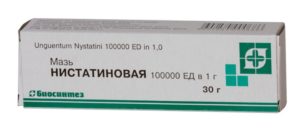
- Nystatin ointment is used for mucosal candidiasis in adults and children.
- Viferon, Zovirax, Acyclovir, Oxolinic ointment have a pronounced antiviral effect, are used for herpes.
- Ointment Metrogil Denta, Methyluracil have an antiseptic and antibacterial effect.
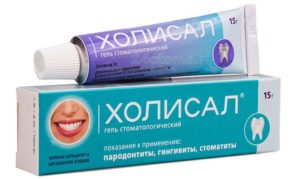
- Gel Actovegin and Cholisal can be used for all types of pathologies. The drugs have a wound healing, antimicrobial, analgesic effect.
- Rosehip and sea buckthorn oils have a good healing and restorative effect on mucosal injuries.
The therapy regimen is as follows. After eating, the person carries out hygienic treatment of the oral cavity. Then he rinses his mouth with one of the antiseptic solutions. This procedure is necessary in order to remove surface microorganisms and dead tissue particles. After that, all foci of infection are smeared with ointment or gel. At the end of the treatment, you must not drink liquids for 1 hour, it is forbidden to eat!
All drugs must be used based on the instructions that accompany the product. When deciding on self-treatment, be sure to read the package insert and take into account the presence of contraindications and side effects.
In case of illness, folk remedies can come to the rescue. These include rinsing with a salt and soda solution. To prepare the solution, take 1 glass pure water, add 1 teaspoon of salt and soda to it, mix.
TO folk remedies includes lubrication of foci with aloe and honey juice, rinsing with carrot and beet juice... This treatment is controversial. In order to get rid of the disease for sure, use medicine-proven remedies.
Despite the fact that in most Internet sources there is information that the processing can be carried out with garlic lotions and applications, doctors categorically do not recommend doing this. It is completely forbidden to use these funds for children!
In most cases, with proper treatment, it takes 5 to 12 days. If no improvement is observed within a week, be sure to seek help from your doctor. It may take a thorough examination to solve the problem. If necessary, as prescribed by a specialist, take vitamins and drugs that increase immunity.
If the cause of the disease is not eliminated, stomatitis will recur and constantly come back again. With herpes, the disease can bother its owners 5-6 times a year. This significantly affects a person's life, prevents him from working fully. That is why, if you or your baby once met with a pathology, approach the treatment responsibly and immediately seek help from a dentist.





